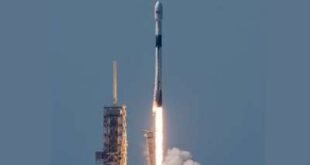The Peregrine lunar lander, built by American space technology firm Astrobotic Technology, has completed its flight readiness campaign.
Pittsburgh-based private space technology company Astrobotic announced that its Peregrine lunar lander completed its flight acceptance campaign. Peregrine will now be shipped to cape Canaveral in Florida after the United Launch Alliance, which will launch the langer, gives the greenlight to receive it.
“These tests ultimately proved the quality of Peregrine’s design and workmanship over the full assembly and integration campaign. Everyone worked diligently, even through holidays, for this incredible achievement,” said Sharad Bhaskaran, Astrobotic’s PM1 Mission Director, in a press statement.
The final hurdle for the lunar lander was thermal-vacuum (TVAC) testing, which Peregrine passed. This proves its ability to survive and operate in the cold vacuum conditions of space. It was subjected to extremely hot and extremely cold temperatures inside a thermal vacuum chamber to simulate the conditions it will actually face during the mission.Astrobiotic’s mission is part of NASA’s Commercial Lunar Payload Services (CLPS) initiative, where the space agency will work with many American space technology companies to deliver science and technology to the Moon’s surface.
Astrobiotic is also working on another CLPS mission, VIPER (Volatiles Investigating Polar Exploration Rover). After landing on the lunar surface, the VIPER rover will return measurements that will give scientists insight into the origin and distribution of water on the Moon. This can help determine how future crewed space exploration missions can harvest lunar resources. The mission was initially set to launch in November 2023, but its dates have been pushed back to November 2024.
While the Peregrine lander was being tested, another privately built lunar lander, Hakuto, is taking a slow, low-energy path to the Moon. The lander built by Japan-based Ispace will travel around 1.6 million kilometres away from our planet before looking back to put itself on a course to the Moon.
 Digital Scoop India Official Platform of Digital Scoop India Featuring Latest & Best News #Articles #Bytes #Entertainment #DigitalScoopMagazine
Digital Scoop India Official Platform of Digital Scoop India Featuring Latest & Best News #Articles #Bytes #Entertainment #DigitalScoopMagazine


